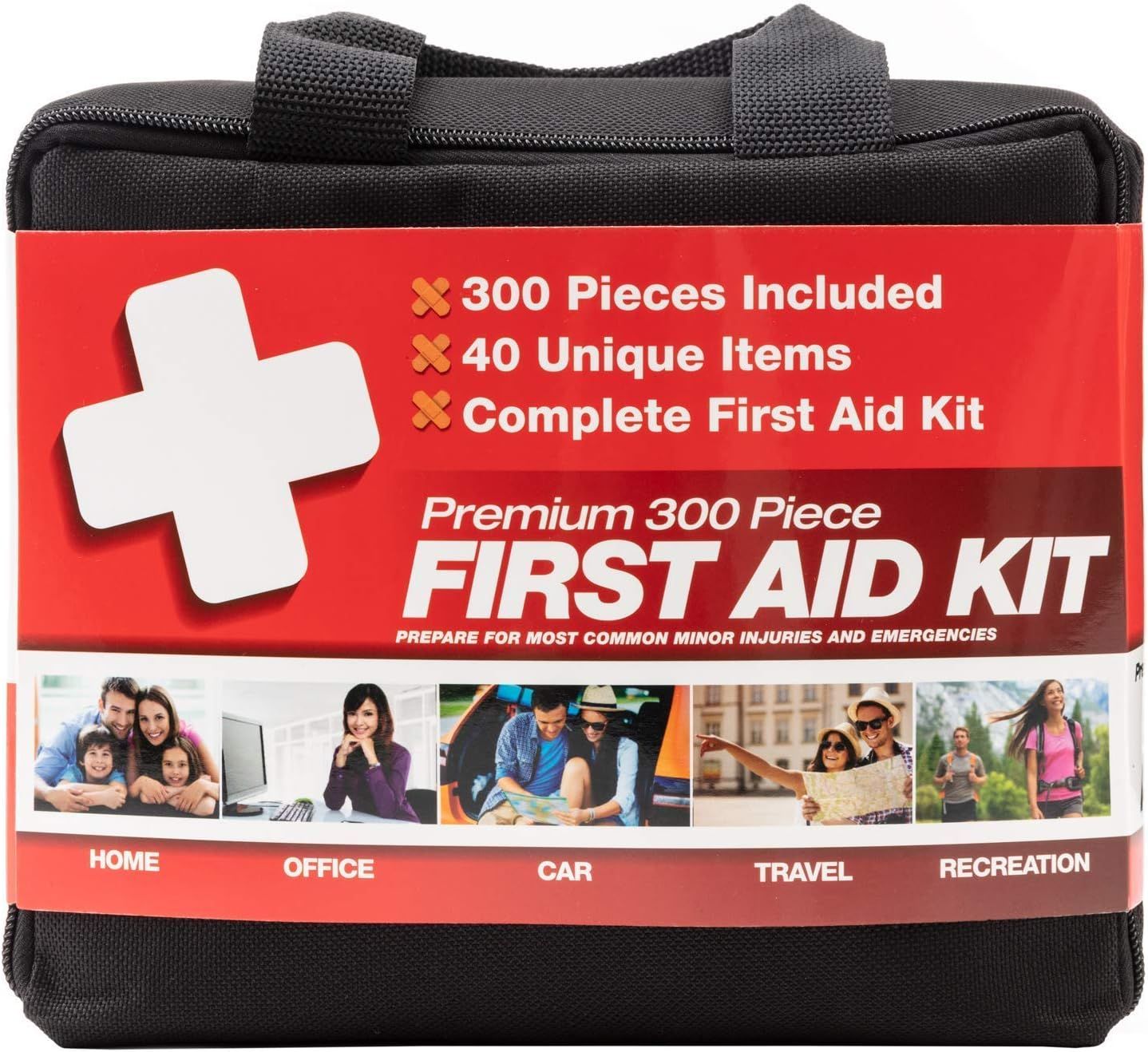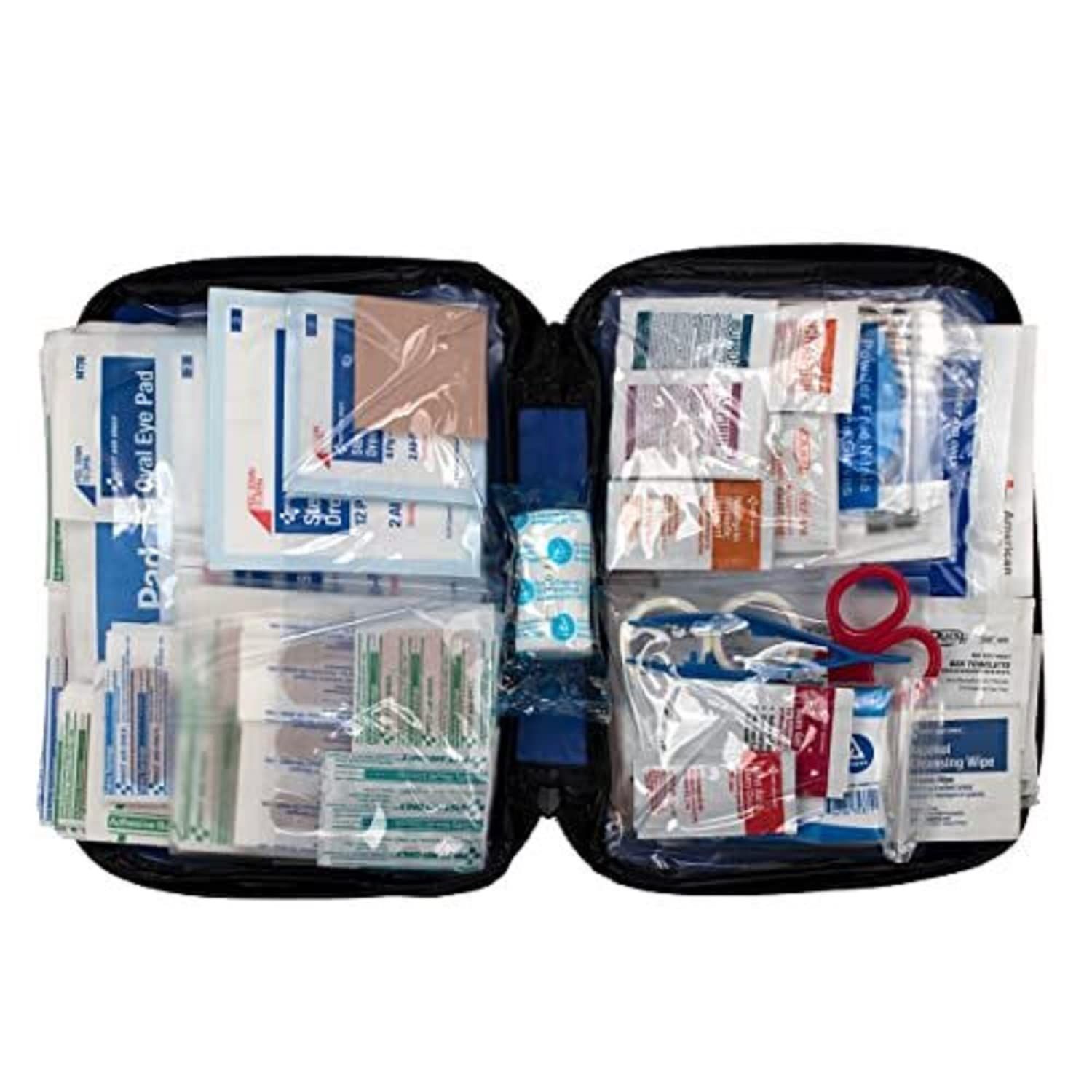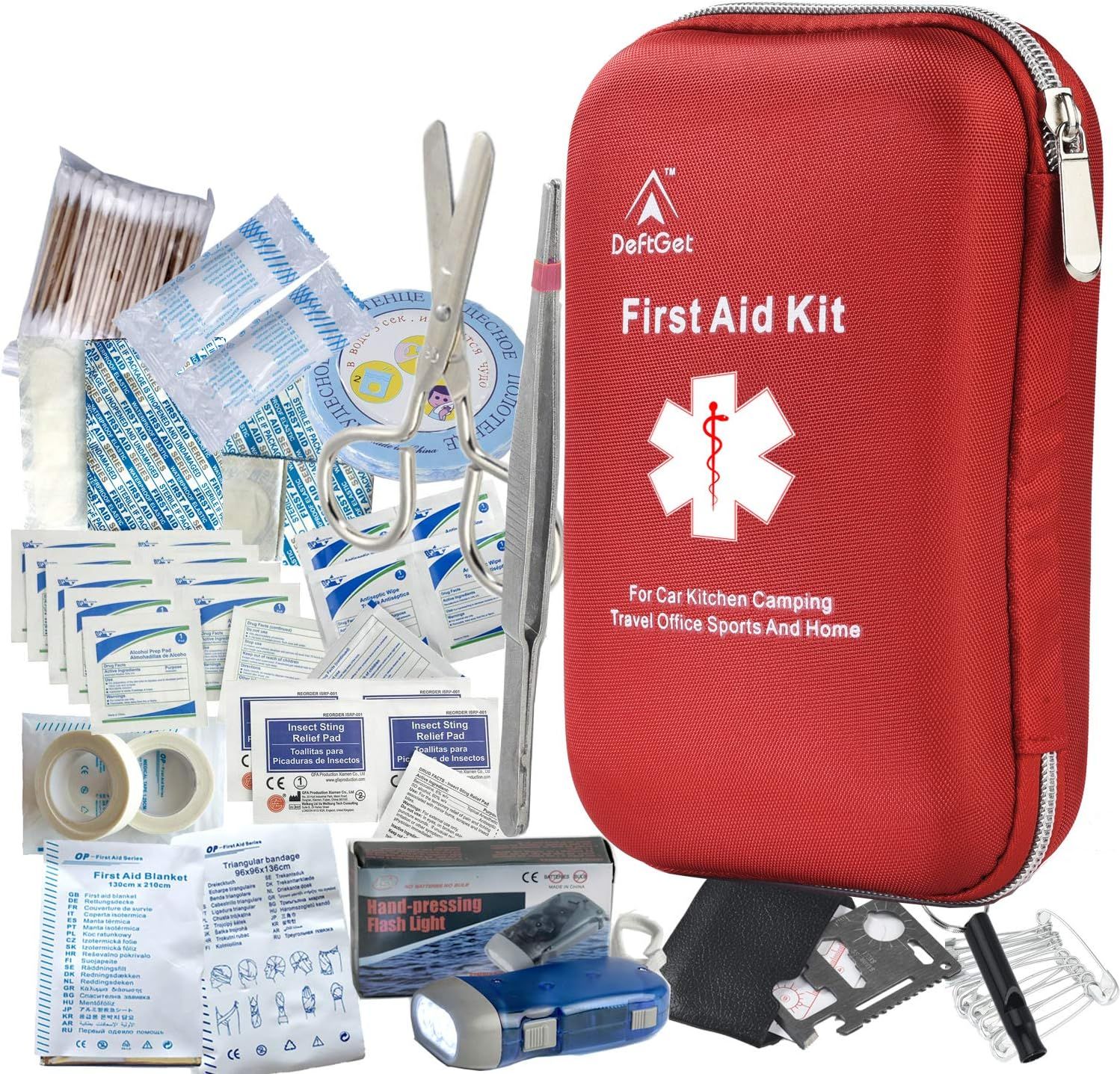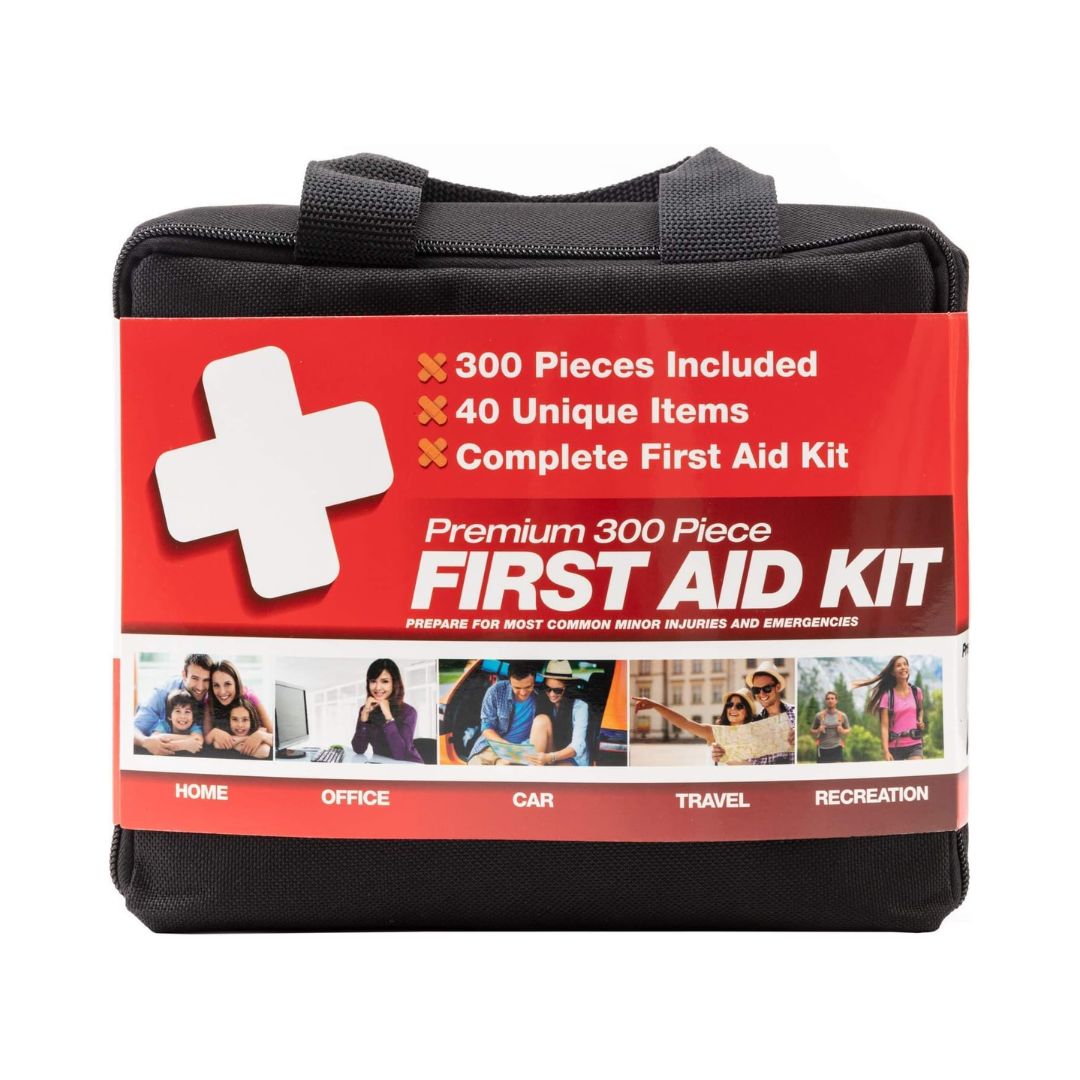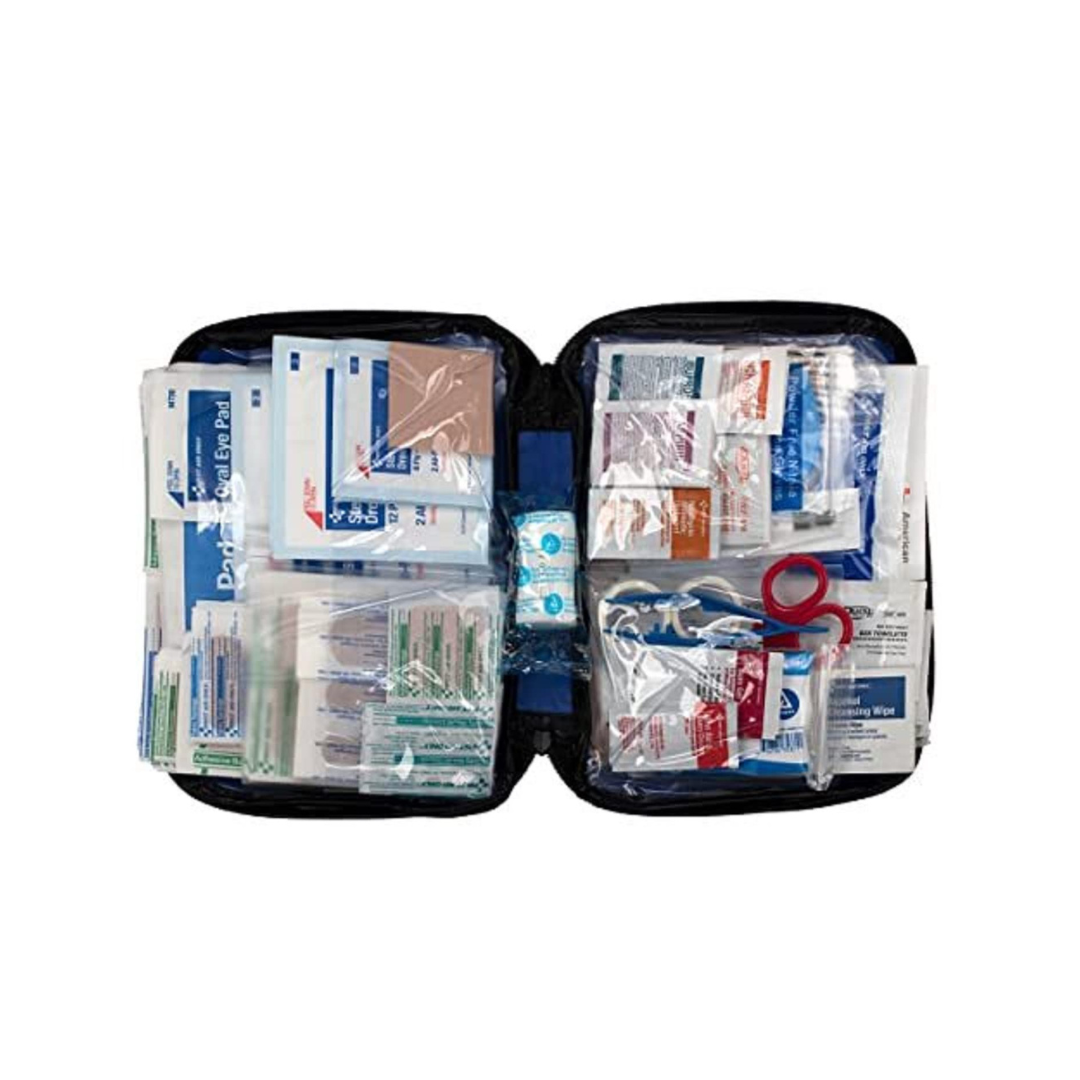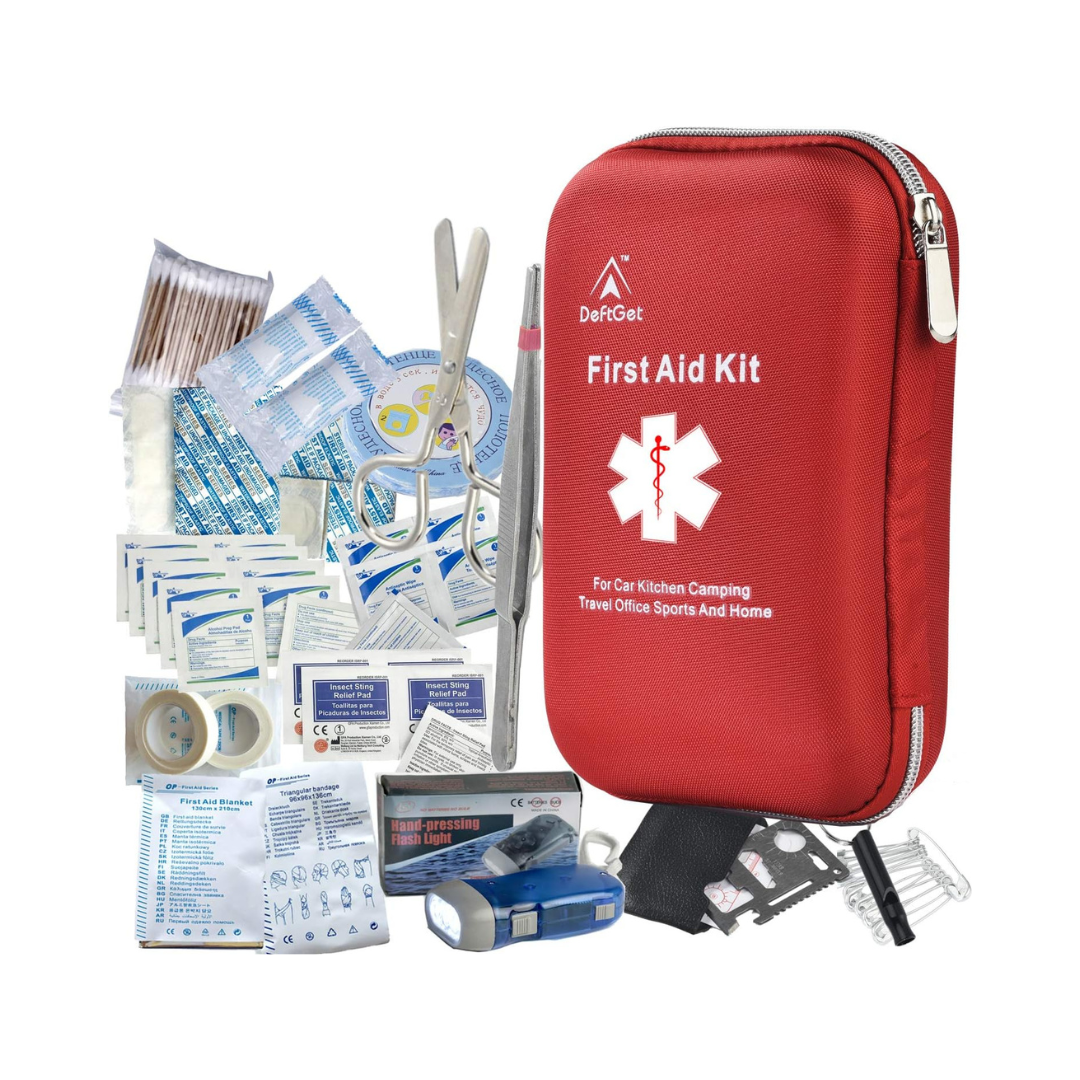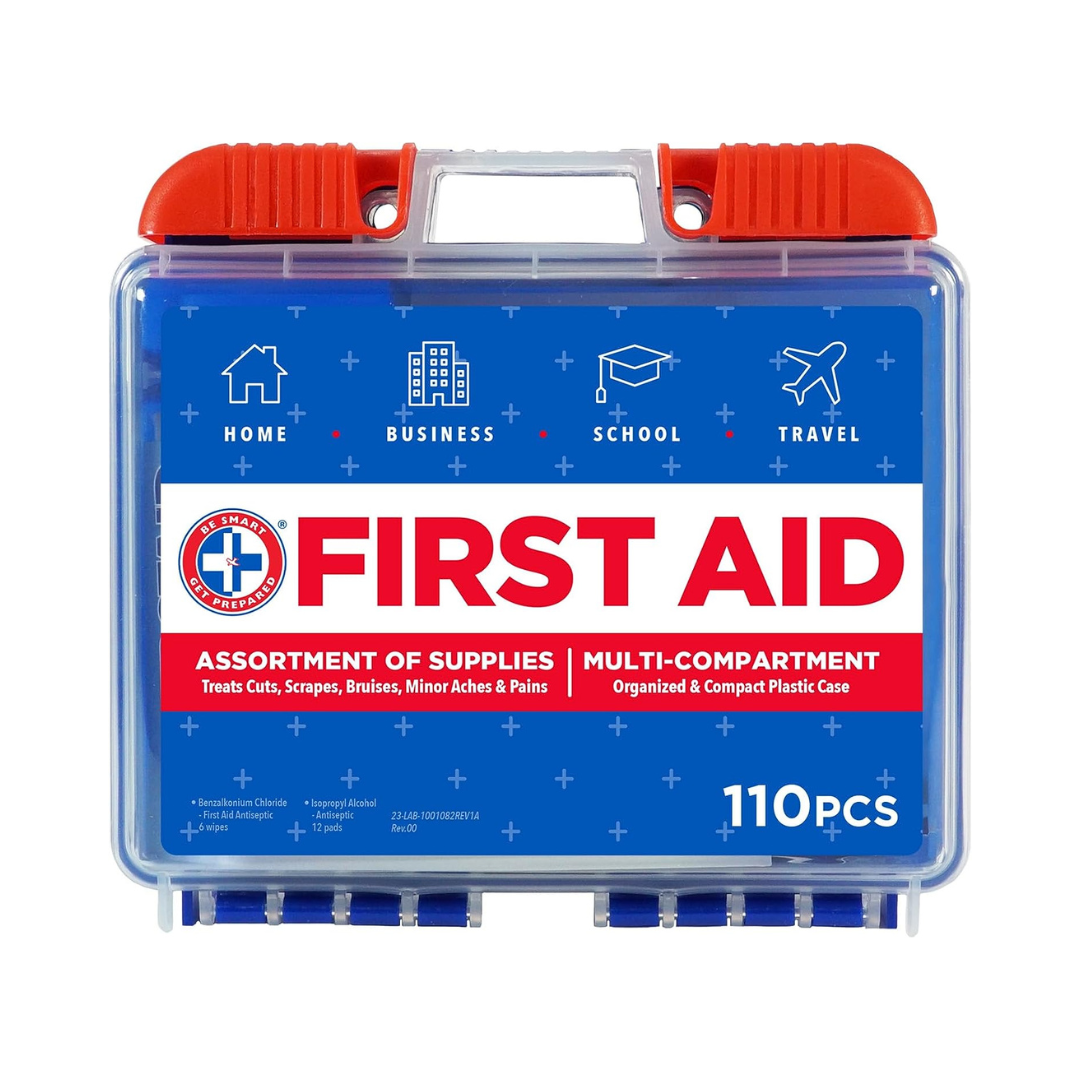We may be compensated if you purchase through links on our website. Our team is committed to delivering honest, objective, and independent reviews on home products and services.
A first aid kit is an essential that’s often overlooked until it’s needed. Most home improvement enthusiasts have endured DIY injuries, but minor medical mishaps are commonplace both within and outside of the home. First aid kits have adhesive bandages, pain relief, antibiotic ointment, and other basic medical care items needed to treat all sorts of mishaps.
With all of the options on the market, our team took a look at some of the best first aid kits to meet a variety of settings and scenarios. Here are our top picks.
Top 4 First Aid Kits
- Most Comprehensive Kit: M2 Basics First Aid Kit
- Best for Cuts and Scrapes: First Aid Only All-Purpose Kit
- Best All-Around Kit: DeftGet First Aid Kit
- Best Basic Kit: Be Smart Get Prepared First Aid Kit
Compare Top First Aid Kits
| Product | Size | Usage | Case Type |
|---|---|---|---|
| M2 Basics First Aid Kit | 300 pieces | Medical and non-medical emergencies | Soft fabric case |
| First Aid Only All-Purpose Kit | 298 pieces | Medical emergencies | Soft fabric case |
| DeftGet First Aid Kit | 163 pieces | Medical and non-medical emergencies | Hard fabric case |
| Be Smart Get Prepared First Aid Kit | 397 pieces | Medical emergencies | Hard plastic case |
| Product | Size | Usage | Case Type |
Best Comprehensive Kit
Pros and Cons
✔ Contains a triangular bandage that you can use as a sling or tourniquet
✔ Includes metal scissors that can cut through the included gauze or light clothing
✔ Has a CPR mask with resuscitation instructions
✘ Has tightly packed items that may be difficult to remove
✘ Doesn’t contain pain or allergy relievers
Key Features
- Contains 300 pieces
- Helps with medical and non-medical emergencies
- Comes in a soft fabric case
What Customers Are Saying
Many reviewers complimented this first aid kit’s value and offerings. However, dissatisfied customers felt it lacked a few essential items, including burn cream, allergy and pain medication, matches, and a flashlight.
Best For Cuts and Scrapes
Pros and Cons
✔ Contains plastic pockets for easy access to the supplies
✔ Includes pain relievers and burn care items
✔ Comes in a soft fabric case that can fit in a backpack or suitcase
✘ Packed with 298 pieces, with adhesive bandages making up more than half of that
✘ Doesn’t include allergy relief
Key Features
- Contains 298 pieces
- Helps with medical emergencies
- Comes in a soft fabric case
What Customers Are Saying
Customers who liked this first aid kit said that its large collection of items was contained within a portable, durable case. However, some customers were stuck in emergencies that the kit couldn’t help with because it didn’t include gloves, antihistamines, and other basic items.
Best All-Around Kit
Pros and Cons
✔ Doesn’t require batteries for the included flashlight
✔ Comes with medical tweezers to handle cuts and supplies
✔ Can use the multitool as a can opener, screwdriver, and other tools
✘ Can be difficult to grip the small, slippery multitool
✘ Contains limited bandage sizes
Key Features
- Contains 163 pieces
- Helps with medical and non-medical emergencies
- Comes in a hard fabric case
What Customers Are Saying
This first aid kit provided customers with care for a variety of situations. A common complaint among unsatisfied customers was that the instructions for using the supplies were worded in a difficult-to-understand way.
Best Basic Kit
Pros and Cons
✔ Comes in a hard case with easy-slide latches to keep the contents secure
✔ Contains a cold pack that stays cool for over three hours
✔ Includes gloves to protect your hands and the cuts you’re handling
✘ Can be difficult to operate the sliders to unlock the case
✘ Contains a limited number of items
Key Features
- Contains 397 pieces
- Helps with medical emergencies
- Comes in a hard plastic case
What Customers Are Saying
Amazon customers commented on this first aid kit’s ease of transport and ability to treat minor injuries. Reviewers also noted that the kit covered the essentials at an affordable price. Some reviewers did, however, note that it contained too many bandages. They had to buy additional supplies, such as tweezers and pain relievers, to complete the kit.
Buying Guide to First Aid Kits
First aid kits differ in terms of the types of emergencies they can help with, the number of items they have, and more. Here are several factors to consider before buying a kit.
Components
Most first aid kits include a combination of wound dressings and medicines. For example, a first aid kit may feature bandages, gauze rolls, pain relievers, and trauma pads to treat different wounds.
In addition to the essentials, some first aid kits offer items that help in non-medical emergencies. From navigation to makeshift shelter, these items typically include an emergency blanket, compass, whistle, and glowstick to help individuals in more severe situations.
Size
While the size of a first aid kit impacts the number of items it can carry, it also influences where you can store it. For example, compact kits are designed to fit in a backpack or under a car seat, while large, comprehensive kits may need to be stored in a closet.
Organization
Most first aid kits store their contents in pockets or sections to organize them. Common systems include mesh or plastic pockets, elastic loops, and zippered compartments.
Quality
Not all first aid kits are created equal. Although a larger kit may seem like a better buy than a smaller kit with fewer items, the quality and longevity of the tools and supplies contained in the kit matter. If you’re in a true emergency situation, you rely on a first aid kit’s contents. Unreliable tools exponentially decrease the utility of a kit, especially if you’re in a time-sensitive, panicked situation.
Literature
A medical emergency is no time for leisure reading. However, you may find yourself panicked, overwhelmed, and unsure of what to do and how to utilize the contents of your emergency kit. That’s why many kits include easy-to-understand guides for those who are attending to an emergency. This information is designed to be clear and concise to calm the user and help them focus on the task.
Non-Medical Emergency Preparedness
From fires to tornadoes, not all emergencies are medical. Having the right gear on hand for a variety of emergencies will help protect your home and family as well as deal with unpleasant realities, such as power outages and broken windows. Here are the most critical supplies to have on hand when things go wrong:
- Alcohol wipes
- Carbon monoxide alarm
- Duct tape
- Emergency blanket
- Emergency radio
- Extra batteries
- Fire extinguisher
- Flashlight, headlamp, or lantern
- Multitool
- Nylon rope or paracord
- Work gloves
- Smoke detector
Frequently Asked Questions About First Aid Kits
What items should be in a first aid kit?
What goes into your first aid kit is based on what you plan to use it for. However, in general, this is what the Red Cross recommends a kit should contain for a family:
- Absorbent compress dressings
- Adhesive bandages
- Adhesive cloth tape
- Antibiotic ointment
- Antiseptic wipes
- Aspirin
- CPR mask or similar breathing barrier
- Elastic bandages
- Emergency blanket
- Emergency first aid guide
- Face masks
- Gauze pads and rolls
- Hydrocortisone ointment
- Instant cold compress
- Non-latex gloves
- Oral thermometer
- Sam splint
- Sterile saline rinse
- Tape (cloth, duct, or fabric)
- Triangular bandages
- Tweezers
Where should I keep my first aid kit?
According to the Mayo Clinic, you should keep first aid kits in your home and personal vehicle to effectively respond to injuries and emergencies.
Why should I get a first aid kit?
First aid kits can help you treat minor injuries or respond to life-threatening emergencies before medical professionals arrive.
Can I build my own first aid kit?
While it’s possible to create your own first aid kit by purchasing a variety of bandages, wraps, ointments, and more, buying a pre-assembled kit is typically the most cost-effective. If that kit lacks a few items you like to have on hand, you can add them.
Why You Can Trust Us
This Old House has empowered homeowners for more than four decades with top-notch home improvement content in the form of television programs, print media, and digital content on its website and social media platforms. The This Old House Reviews Team focuses on creating in-depth product and service review content to help inform your purchasing decision for just about any item or resource you might need for your home. The This Old House Reviews Team has written over 1,000 reviews on products in the home space, from cordless drills to kitchen trash cans, lawn mowers, and dining room decorations.
We recommend products in each review using an intensive research process, spending hours combing through the best available models on Amazon. For a product to make our list of top picks, it must hold a solid sales record on Amazon, have consistently positive customer reviews, and offer unique features, among other factors. After narrowing down our list of recommendations, we conduct additional research and sometimes in-person testing to ensure that the products meet our standards. Once we conclude the research phase, we craft a well-rounded, user-friendly article that includes our recommended products and additional information to help homeowners like you make the right purchase.
To share feedback or ask a question about this article, send a note to our Reviews Team at reviews@thisoldhousereviews.com.
